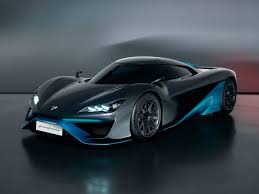Islamabad, Aug 8: UK-based Hydrogen Vehicle With its ultralightweight (only 620 kg) and impressive 400-mile range, Riversimple’s hydrogen-powered supercar is leading the way in a new era of automobile design.
Pushing The Boundaries of Design and Efficiency Riversimple’s supercar, which is presently in development, is expected to go against the accepted conventions surrounding vehicle weight and efficiency. It attempts to solve what Riversimple refers to as the automobile industry’s “crisis of vehicle weight.”
The vehicle will use a tiny 29kW fuel cell to power it to a top speed of 160 km/h and accelerate from 0 to 100 km/h in just 3.5 seconds thanks to cutting-edge hydrogen fuel cell technology. Amazingly, Compared to the Lotus Evija, an electric supercar that takes great pride in its light weight, it will weigh about 1,000 kg less.
Design Efforts
Riversimple has teamed up with postgraduate students from the Automotive and Transport Design program at Coventry University in order to accomplish its lofty objectives. Through this partnership, students will participate in a design competition wherein their ideas for the appearance and inside of the car will be assessed by a panel that includes Andreas Mindt, Head of Design at Volkswagen.
Impact on the Environment
Hugo S-powers, the creator and chief engineer of Riversimple, highlights the necessity of a paradigm change in vehicle design. Over the previous seven years, the average weight of new cars has increased by 25%, which has resulted in higher energy consumption, higher embedded carbon in manufacturing, and increased resource consumption. Furthermore, because of tire emissions, larger cars have been linked to more serious collisions as well as lower air and water quality. These problems have only gotten worse as a result of the switch to battery electricity.
According to S-powers, “Our supercar represents a different approach to creating the ultimate driving experience.” “We want to focus on elegant simplicity and modernity, moving away from aggressive styling and excessive power.”
Cutting Edge Technology and Efficiency
The supercar will make use of technologies akin to the Rasa, the most recent fuel cell vehicle produced by Riversimple. It has an 800V architecture, four inboard electric motors, a lightweight carbon fiber chassis, a hydrogen fuel cell that produces 39 horsepower, and supercapacitors. The car’s aerodynamic design and ultra-lightweight build allow it to achieve exceptional performance figures, such as a top speed of 100 mph and a 0-100 mph acceleration time of 6.4 seconds, despite its small 39 bhp engine output.
Riversimple wants to establish this special supercar as a rare collector by only making 10 to 20 of them. The car is intended to be enjoyable to drive and to have excellent driving dynamics, range, and efficiency. The hydrogen-powered supercar from Riversimple is poised to change the definition of a sportscar for the twenty-first century.



